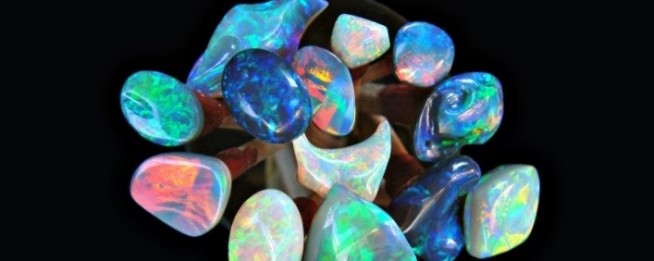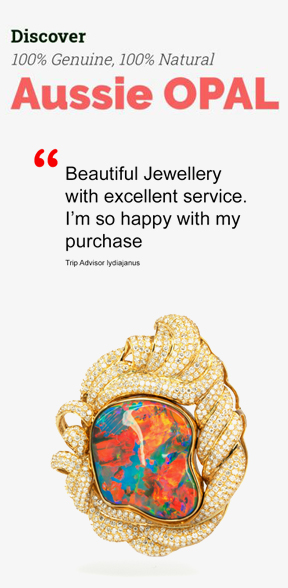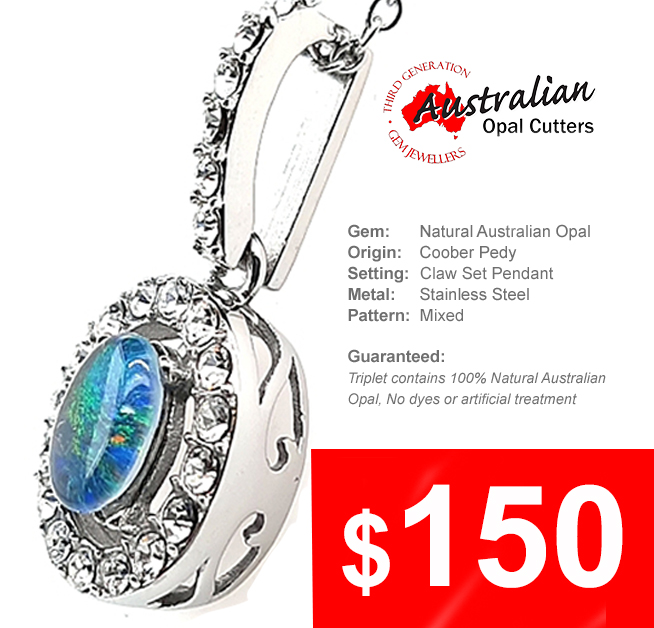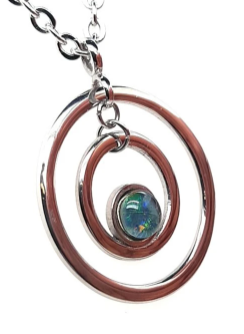Part 2-Opal Creation
OPAL CREATION
OPAL: THE QUEEN OF GEMS
Opal is the most magnificent of precious gemstones. It boasts every colour of the visible spectrum, from deepest and clearest blues and greens to rippling golden orange; through delicate pink and violet to rich turquoise, shocking vermilion, carmine and fuchsia – every colour imaginable.
An opal may contain any or all of these colours, arrayed in wonderous patterns with names like harlequin, pinfire, Chinese writing, flower garden, Mackerel sky, flagstone, and rolling flash. Like all fine things, gem opal is exceedingly rare.
OPAL FORMATION
How were opals created? Opal is formed as water runs down through the earth picking up silica from sandstone. This silica-rich solution is then carried into cracks and voids, caused by natural faults or decomposing fossils. As the water evaporates, it leaves behind a silica deposit. The deposit eventually hardens to form common opal, and in rare circumstances, it forms precious opal.
Silica is one of the most common minerals on the planet, but precious opals are very rare – far more rare than diamonds. Precious opal is rare because the natural processes that create it rarely occur.
Most (at least 95%) of the opal found by miners is common opal without gem colour. In Australia we call this ‘potch’. It can be white, grey, black or amber coloured. Even when a miner finds gem-coloured opal, most of it can’t be cut into gemstones because it’s too thin or sandy.
The Australian Opal fields were once an inland sea. As the ages passed and the seas receded, sea creatures were isolated and marooned, and opalised. Eventually the area dried out completely and is now dry desert country. In time the ground waters, holding silica solution, also evaporated (with some artesian springs still active deep “underground”).
THE 3 MAJOR MINING FIELDS
The Australian Opal fields were once an inland sea. As the ages passed and the seas receded, sea creatures were isolated and marooned, and opalised. Eventually the area dried out completely and is now dry desert country. In time the ground waters, holding silica solution, also evaporated (with some artesian springs still active deep “underground”).
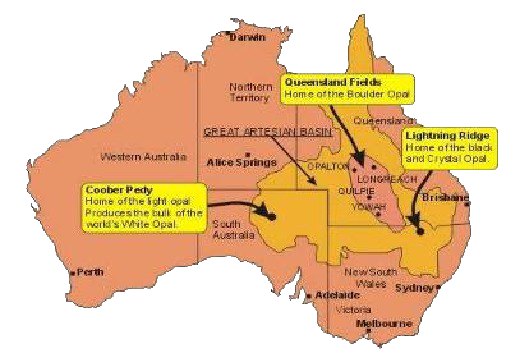
Ancient island seabeds caused sedimentary sandstone to be laid down thousands of years ago and provided the right geological conditions for opal creation. The areas in Australia are called the great artesian basin which holds the 3 major mining fields:
1) Coober Pedy, home to the light opal white and crystal opal,
2) Lightning Ridge, home to black opal, and
3) The Queensland fields, which are home to boulder opal.
HOW OPAL FORMS
The opal forms in generally elongated or ellipsoidal ironstone concretions or boulders, from a few centimeters, to up to 3 m across. The boulders may be confined to one or more layers or randomly distributed through the weathered sandstone. Their composition ranges from sandstone types (a rim or crust of ferruginised sandstone surrounding a sandstone core) or ironstone types (composed almost entirely of iron oxides). The opal occurs as a filling or lining between the concentric layers or in radial or random cracks in the ironstone.
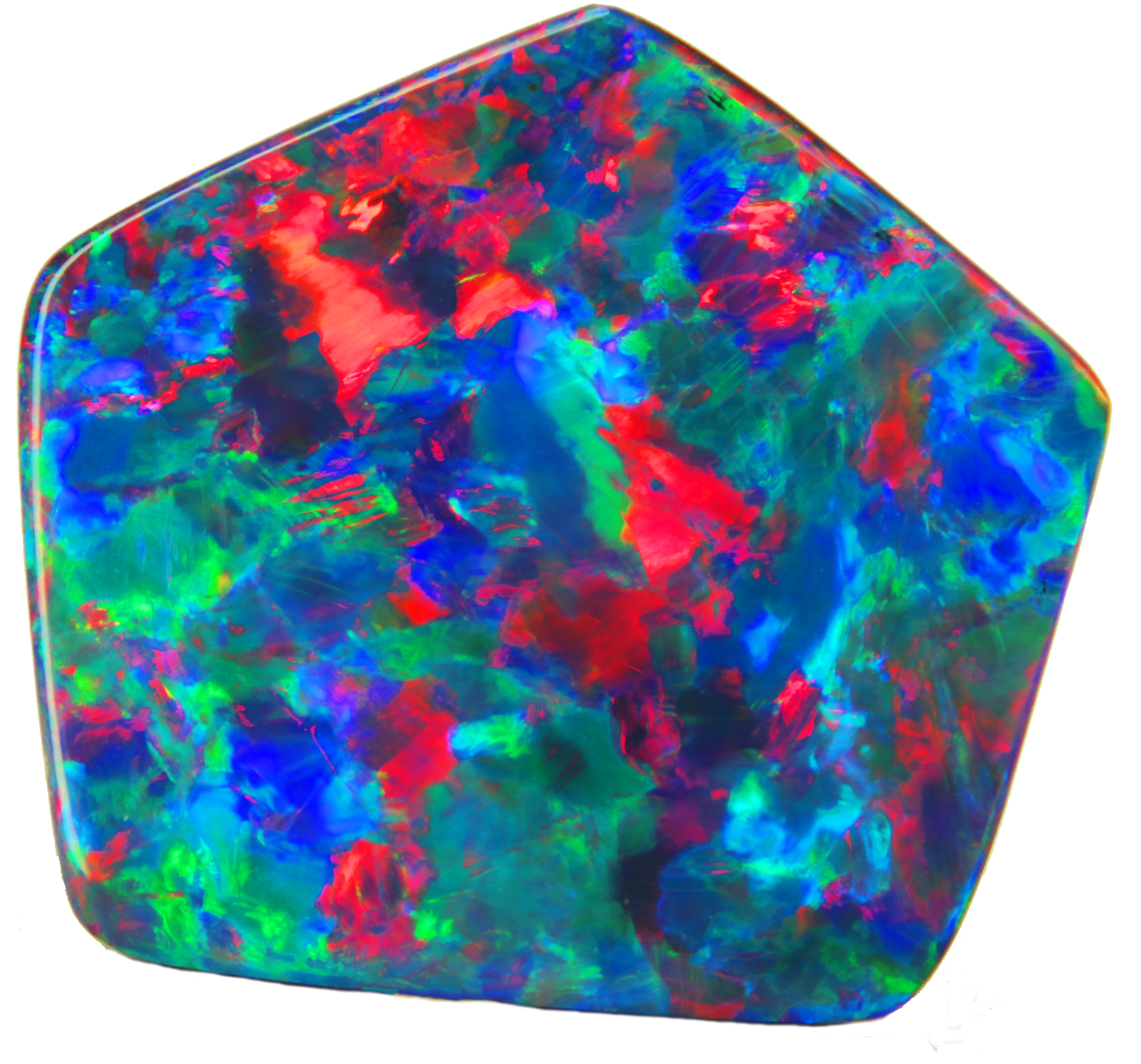
Hold a Rainbow in Your Hand
The creation of Opal colour is unique as this is the only Gem on earth where you can (literally) ‘’Hold a Rainbow in your hand’! As unexpected as it may seem, the ingredients behind the sought-after gem are quite commonplace.
Opal is formed when water containing dissolved silica seeps within beds of Australian soil, where the elements of water and silica are deposited into cracks deep within the earth (often caused by natural faults, or decomposing fossils). As the water subsequently evaporates, the silica particles react and become ‘cemented’ together, forming the structure known as opal.

How Light Creates Colour
This is an interesting and unique process, as the colour and beauty of these gemstones are dependent on chance, making them a gem that is incredibly rare. The structure of the silica is entirely responsible for the opal’s colour and vibrancy, as the light will bend around the silica structure in order to produce the variety of radiant colours that the gem is known for. This process is similar to other gemstones, in regard to how the mineral interacts with light; the colour of a gemstone is a direct result of how the gem absorbs light.
Overall, minerals, in general, have different ways of absorbing light, and therefore will result in different colours and variations. The same is true for opals. However, unlike other gemstones, opal is not a mineral, as it contains no crystalline structure. Rather, it is comprised of microscopic spheres of silica, and is arranged in an orderly pattern; this means that, although opal produces colour through light like other gemstones, the colours require structure within the rock in order to form, as the light will bend around the obstacle (the silica pattern) in order to create a unique design! This is why no natural opal is the same.
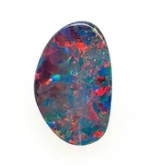
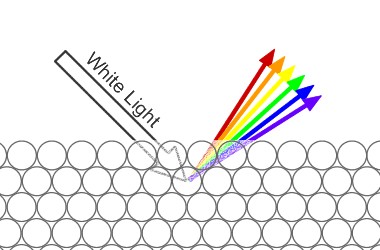
Play-of-Color in Opal: White light enters an opal and interacts with the tiny silica spheres that make up its internal structure. The light is diffracted into its component colors and exits the opal in a flash of spectral colors.
GARRAY GUNDA – The Creators Gemstone
